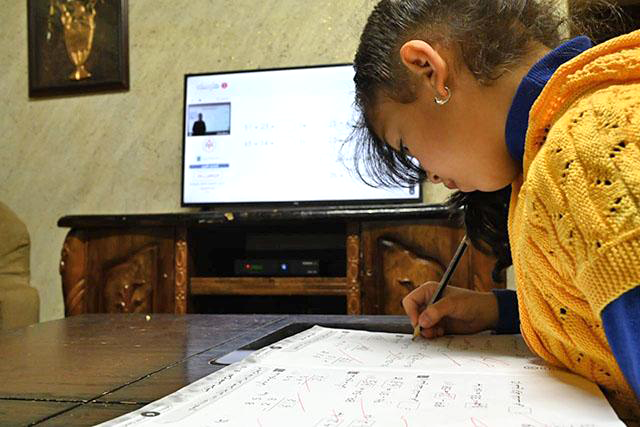- Local News
- Thu-2020-05-21 | 02:25 pm

In a blog post titled "Innovation in responding to coronavirus could pave the way for better learning outcomes in MENA”, published on the bank’s website, the WB lauded Jordan, Egypt, Lebanon and Morocco’s innovative efforts towards mitigating the impact of school closures.
As the COVID-19 global pandemic has swept across the globe in recent weeks, countries in the Middle East and North Africa (MENA) have not been spared. In an effort to curb the spread of infections, governments across the region began restricting movements and closing schools in early March. Today, educational institutions remain shuttered and over 100 million students are out of the classroom, the article said.
In Jordan, collaborations between ministries and service providers across private entities and countries have proliferated in recent weeks, delivering a "collective greater good”, the article noted.
An education portal, "Darsak", was developed through a partnership between the Ministry of Education, the Ministry of Digital Economy and Entrepreneurship and a private enterprise called Mawdoo3, the article noted. The content, in the form of lessons tied directly to the Jordanian curriculum, was crowdsourced from a number of educational organisations including Edraak, JoAcademy and Abwab.
The result is a one-stop-shop that delivers weekly-scheduled classes for all grades, the article said.
To mitigate the impact of school closures, education in the Middle East has gone virtual, moving online where connectivity can be established and using television, radio and paper-based approaches where internet access is limited, the blog added.
Highlighting the challenges brought on by a switch to distance learning, the article said that the process "has not been easy” and the transition is "far from seamless”, as telecom infrastructure is inconsistent across the region.
A number of households still do not have laptops, tablets or smartphones accessible to students for regular learning. Teachers have had "little or no time” to acclimate to new teaching tools and are now creating curricula and structuring remote classes, finding it difficult to engage and assess students remotely.
Despite these inconveniences, these efforts have the potential to expand the flexibility of delivery education in the region, the article said.








